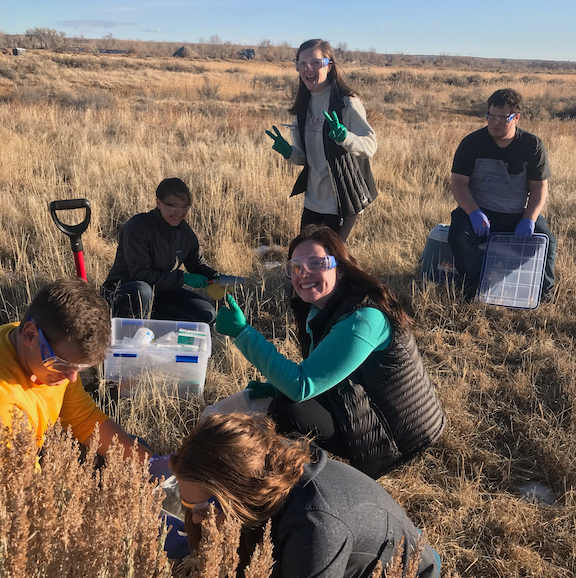Problem-based learning (PBL) has more than one historical root. Some credit its inception to medical educators in the 1980s but prior to the work of these educators, Paulo Freire coined problem posing pedagogies. In his book, Pedagogy of the Oppressed (Ch. 2), he writes, “…abandon the educational goal of deposit-making and replace it with the posing of the problems of human beings in their relations with the world."
PBL is learning that centers on a problem. Torp and Sage (2002) define PBL as, “…focused, experiential learning organized around the investigation and resolution of messy, real-world problems.” In PBL, the problem is significant, authentic and may have a high level of difficulty. These types of problems often have many solutions and in seeking these solutions, learners take responsibility for their own learning and have to defend their approaches (Savory, 2006; Spektor-Levy et al., 2009). In PBL, students perform a whole task rather than being asked to memorize components of a task being taught individually (Merrill, 2002). PBL is collaborative, integrated/inter or transdisciplinary, involves post-process reflection and self- and peer-evaluation (Savory, 2006).

There are many models for problem-based learning. We suggest some steps for integrating a PBL model in your class:
1. Look to your local community first for significant problems. Whether it is a local garden or a statewide citizen science project, our community is filled with authentic issues to which students can apply their knowledge.
2. Let your students guide your problem choice. Before the semester begins, ask your students to weigh in on problems. Allow them to 'take the driver's seat' even before the term begins!
3. Consider the difficulty of the problem (Jonassen and Hung, 2008). If problems are ill structured, learners may have to carefully weigh possible solutions, applying various criteria and enact personal judgement. Determine whether the difficulty of the problem aligns with learners' stages of development. William Perry's work may be helpful here.
4. Determine what skills and knowledge must be reactivated or modeled in order to support students' problem solving. Build this into the early days/weeks of class.
5. Allow ample time for problem solving. If students are doing benchtop science, field science, computational modeling or producing a creative work, allow the largest block of the term to be devoted to this. I like to utilize 5 weeks for front-end preparation, 6-weeks for problem solving and the last couple of weeks for preparation and dissemination of the public product.
6. Identify an authentic way in which your students can share their work. Select a community event, professional conference, subject-matter expert, panel of reviewers, K-12 outreach event etc. at which your students can present their findings or for which they can develop curriculum based on their work.
7. Integrate reflection and self- and peer-evaluation. Ask student teams to create a rubric at the beginning of the semester that will enable them to evaluate themselves and others. Formalize submission timepoints for this evaluation rubric and enable students a mechanism to reflect on the feedback they give each other and themselves.
Rachel uses Merrill's First Principles Problem-Based Learning Model in her Capstone course where students work to address real community problems (such as impacts of the Wyoming Medication Donation Program (a drug recycling program) on levels of antibiotic resistance in waste water). This problem-based student learning model includes four instructional phases: activation of old knowledge, demonstration of skills, application of skills and integration of skills into real-world activities. We have published about this course design, development, implementation and assessment!
In this vodcast, Rachel introduces problem-based learning and opens the stage for educators to consider problems and approaches to PBL:
References and Resources
Jonassen, D. H., & Hung, W. (2008). All problems are not equal: Implications for problem-based learning. Interdis- ciplinary Journal of Problem-Based Learning, 2(2), 6–28. https://doi.org/10.7771/1541-5015.1080
Merrill, M. D. (2002). First Principles of Instruction. Educational Research Training and Development, 50(3), 43–59. https://doi.org/10.1007/BF02505024
Savery, J. R. (2006). Overview of Problem-based Learning: Definitions and Distinctions. Interdisciplinary Journal of Problem-Based Learning, 1(1).
Spektor-Levy, O., Eylon, B.-S., & Scherz, Z. (2009). Teaching scientific communication skills in science studies: Does it make a difference? International Journal of Science and Mathematics Education, 7(5), 875–903. https://doi.org/10 .1007/s10763-009-9150-6
Watson. R. M., Willford, J.D. and Pfeifer, M. (2018) A cultured learning environment: Implementing a problem and service-based microbiology capstone course to assess process and skill-based learning objectives. Interdisciplinary Journal of Problem Based Learning (IJPBL). Vol. 12, Issue 1, Article 8, March 1, 2018. Available: https://docs.lib.purdue.edu/cgi/viewcontent.cgi?article=1694&context=ijpbl

